Comparative test: Eleven-metre cruisers compete against each other in the Franco-German summit meeting



- The candidates in the comparison test
- Key figures and measured values in comparison
- Opinions differ on how to guide the lines
- Working on the bike with different levels of comfort
- The bathing platform as a calling card
- Practicality comes first
- There is plenty of storage space on all boats
- Conclusion
- YACHT ratings of the test candidates
- Technical data and prices at a glance
Hardly any other class is as competitive on the market as touring yachts with a hull length of around eleven metres. Their appeal lies above all in their manageable format, which is also suitable for beginners. Nevertheless, the boats are large enough for the family with extensions up to three cabins with two wet cells. At the same time, they cover a broad spectrum: from holiday or weekend cruises to daysailers and sporty boats for club regattas with suitable upgrades.
You can read the detailed results on comfort, living space and everything about the prices in Part 2 of the comparison test.
So it's no wonder that the large series shipyards in particular are paying the greatest attention to this popular class. It's not just about the number of units, but also about retaining new customers and those switching to the brand. Accordingly, the yachts have to fulfil the high demands of an accurately comparative clientele as well as embody the typical brand values. This makes the competition intense - and the concepts surprisingly homogeneous.
The competitive pressure is high and manufacturers are busy updating their models. The last comparison test in this class was published by YACHT in 2021, and many models have since been revised. So it was time for a new test, this summer on the Flensburg Fjord. And: all four shipyards approached accepted the YACHT invitation.
That is also interesting:
It is therefore no wonder that the large-scale shipyards in particular are paying the greatest attention to this popular class. It's not just about the number of units, but also about retaining new customers and those switching to the brand. Accordingly, the yachts have to fulfil the high demands of an accurately comparative clientele as well as embody the typical brand values. This makes the competition intense - and the concepts surprisingly homogeneous.
The competitive pressure is high and manufacturers are busy updating their models. The last comparison test in this class was published by YACHT in 2021, and many models have since been revised. So it was time for a new test, this summer on the Flensburg Fjord. And: all four shipyards approached accepted the YACHT invitation.
The candidates in the comparison test
Bavaria Yachts from Giebelstadt is sending an "old acquaintance" into the race with the C38 (Click here for the individual test). The construction designed by Maurizio Cossutti already took part in the last eleven-metre group test in Neustadt and is the model with the most years of service within the test fleet. Also from Germany is the Hanse 360, which has been on the market since summer 2024 (read the test here). The boat from Greifswald complements Hanse's new touring line, developed in co-operation with Berret-Racoupeau Yacht Design.
The four comparison yachts represent the latest state of development. The focus is clearly on maximising volume.
The French competition is represented twice: with the Beneteau Oceanis 37.1 (to the individual test) and the Sun Odyssey 380 from Jeanneau (extensively tested). Both yachts come from the same group of companies and were designed by Marc Lombard Yacht Design - one of the most renowned design offices in France. Nevertheless, the concepts of the two brands differ significantly, making them less directly comparable within the test group than their common origin would suggest.
Key figures and measured values in comparison






Of course, Dufour Yachts would also have fitted into this circle of large series shipyards. However, the shipyard from La Rochelle does not currently offer a model with a hull length of around eleven metres. The Dufour 37 sounds apt from the name, but at 9.99 metres it measures around one metre less than the competition. This would have required additional explanation in almost all evaluation categories and made comparisons considerably more difficult - which is why the brand was left out this time.
Uncompromisingly designed for maximum volume
Essentially, the 38-footers from large shipyards are more manageable and less expensive offshoots of their sister models from the popular twelve-metre class (40/41 feet), which is in particularly high demand in the charter sector. There are also many parallels in the interior design - layouts and variants are usually almost identical.
The test yachts also show remarkable uniformity in their design. The hull lines of all four models are uncompromisingly designed for maximum volume - a trend that characterises modern yacht building, especially in the small and medium-sized segment. The full foredeck is striking, while the sterns are almost as wide as the centre of the boat. The freeboard height also seems to have become standardised: At the height of the shrouds, it is 1.35 metres above the waterline on all four boats.
Opinions differ on how to guide the lines





The Oceanis 37.1 and the Sun Odyssey 380 (both Lombard) as well as the Bavaria C38 (Cossutti) have a pronounced chine on the hull. As a result, the boats should develop more dimensional stability when heeling and sail more upright. The Hanse 360 from Berret-Racoupeau has a more moderate appearance at the stern and is visually more pleasing. Its stronger U-frame and the further drawn-in waterline are intended to reduce the wetted surface and thus minimise drag in the water.
Weather conditions make for ideal test situations
The comparison tests under sail take place on the Flensburg Fjord in very different conditions, from almost calm to a stiff breeze. This gives the YACHT test crew the opportunity to assess the performance potential and sailing characteristics across almost the entire spectrum. What is missing on the fjord, however, are the waves in stronger winds.
The direct comparison is made more difficult by the inconsistent equipment of the four test yachts. The Beneteau Oceanis 37.1 competes in the sporty "First Line" version, with a higher mast, mainsail with a top-flare and an overlapping genoa instead of the standard self-tacking jib - clear advantages in the comparison. The Hanse 360 can also benefit from a high-quality laminate sail set.
Working on the bike with different levels of comfort
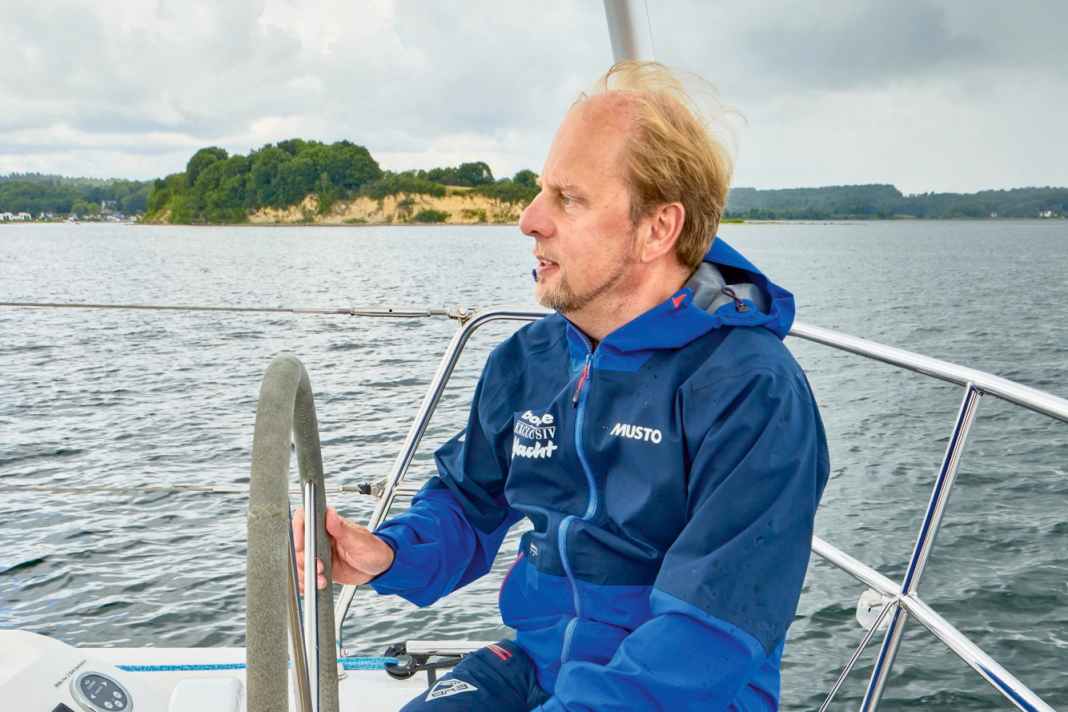




The C38 provided by Bavaria, on the other hand, has been in charter operation for some time, comes with an optional furling mast and a visibly used set of sails. Its underwater hull has obviously not been cleaned for some time and the boat is only equipped with a short keel. So the Bavaria is at a disadvantage in terms of materials. Only the Jeanneau Sun Odyssey 380 is delivered largely in standard configuration, with a simple set of Dacron sails.
French strong in light winds
With initially very light winds on the first day of testing, the two French boats are able to lead the way. At around 6.9 tonnes, both the Beneteau and the Jeanneau are lighter than the Hanse (7.8 tonnes) and especially than the Bavaria at just under 9.4 tonnes. Accordingly, the French boats move more lively in light winds and accelerate noticeably better than their German rivals.
With more wind around 15 knots, the Oceanis 37.1 in particular shows a strong performance upwind and can pull away with a little more height and speed. However, the Hanse 360 remains close on her heels. With its standard sails, the Jeanneau Sun Odyssey 380 is at a disadvantage compared to the Hanse and Beneteau, but also keeps up over longer distances. The biggest surprise, however, is the Bavaria C38, which keeps up surprisingly well despite its furling mast and weak sails. With a conventional rig and better wardrobe, she would undoubtedly have much more potential.
The bathing platform as a calling card





What's more, the Bavaria can catch up on the way back under gennaker. Hanse and Jeanneau also impress with large, well-cut bubbles. The Beneteau, on the other hand, had to relinquish the lead it had previously gained: The Oceanis 37.1 was only equipped with a furling Code Zero for the test and is therefore at a clear disadvantage downwind. Generally speaking, all results depend on the steering and trim of the crews - as well as the gusty, changeable conditions on the Flensburg Fjord.
The layouts on deck are different. They have advantages and disadvantages depending on their use and application. There is no one-size-fits-all solution.
German models show good-natured steering characteristics
The sailing characteristics of the test boats are more important than the mere performance comparison. This is where the differences are clearer and more noticeable. The German models from Bavaria and Hanse both have a single rudder. They are easy to steer, respond with pleasant rudder pressure and can be manoeuvred very sensitively on the wind edge. They are also good-natured, forgiving of steering errors and minor inattentiveness.
The two Lombard designs from France behave a little more "bitchy" in comparison. With their smaller twin rudders, they react more directly and without delay. Their steering is very neutral and rudder pressure is barely noticeable.
Practicality comes first
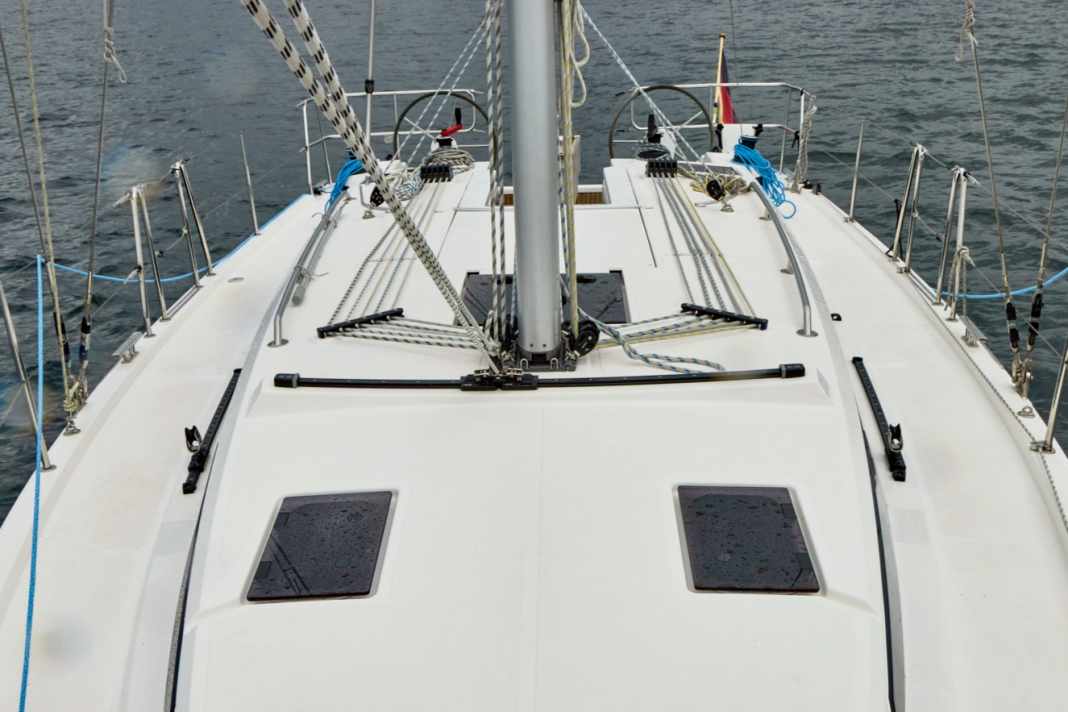





However, this makes it difficult to optimise steering in the wind and requires the full attention of the helmsman. More work and course corrections are required on the wheel than with the German boats. However, this can be both an advantage and a disadvantage, depending on how sporty you want to sail the boats. The dynamic sailing characteristics are also due to the lower weights of the French models.
The keels are standardised: As standard, all models are equipped with fixed L-shaped cast iron keels with draughts of between 2.00 and 2.10 metres. The ballast proportions are also close together at 23 to 26 per cent of the total weight. Alternatively, short keels with a draught of 1.55 to 1.65 metres and a higher ballast ratio are available for all short keels. Only Jeanneau offers a variant with a variable draught: the Sun Odyssey 380 can be equipped with a hydraulically retractable swing keel (1.32 to 2.70 metres).
Jeanneau also makes an exception with the sail plan. The Sun Odyssey 380 is the only boat in the comparison group to be equipped with a 105 per cent genoa as standard. A self-tacking jib is also not available as an option. The competitors, on the other hand, have a jib with a self-tacking rail as standard. A larger genoa with hole points on the deck is only available at extra cost.
Traveller in the cockpit not available from any competitor
The layout in the cockpit also gives the Jeanneau a unique selling point. As with all models in the Sun Odyssey series, the shipyard has also opted for the innovative walkaround cockpit on the 380. The side decks slope downwards like ramps and create barrier-free passageways around the helm stations to the foredeck. The disadvantage: the lowered gangways mean that the helmsman has little room to sit. The competition offers more freedom of movement and a more relaxed seating position.
An adjustable backstay is standard equipment on both German boats. Beneteau and Jeanneau, on the other hand, lack this important trimming instrument. There, masts with strongly swept spreaders and high shroud tension are used to reduce the sag in the forestay. However, the lower trimability is offset by the advantage of being able to sail a powerful square-head mainsail. Hanse and Bavaria, on the other hand, stick to the classic pin-head mainsail.
There is plenty of storage space on all boats





Another country-specific difference: on Beneteau and Jeanneau, the main booms are attached very low on the mast. Although this makes it easier to hoist the mainsail into the lazy bags, the flatter draft angle reduces the efficiency of the boom vang. This would be particularly important when trimming backstayless rigs - a compromise that the French deliberately make.
On all four boats, the mainsheet is guided via a sheet triangle that is attached to the cabin superstructure above the companionway. A traveller in the cockpit, which would enable better and more efficient trimming, is not available from any of the competitors, not even as an option. Bavaria equips the C38 with two separate bulkheads as standard to partially compensate for the missing traveller function. However, this simple but effective solution requires more work on the winches during manoeuvres. The competitor boats, on the other hand, only have a sheet triangle on the cabin superstructure so that the boom can be trimmed closer to the centre of the ship with less pull.
Self-tacking jib or genoa. The buyer has the choice. But only Jeanneau includes the large foresail as part of the basic package.
Deck layout with refinements
The deck layout of the two French yachts is similar: winches on the companionway for halyards and trim lines and two further winches for the sheets within reach of the helmsman in front of the steering positions. This is particularly advantageous on the Jeanneau: thanks to the walkaround cockpit, the trimmer or helmsman can stand recessed to the side next to the coaming and crank efficiently while standing. This gives the Sun Odyssey 380 a clear advantage. As the Jeanneau is delivered exclusively with an overlapping genoa, the additional winches at the rear are standard equipment. On the Beneteau, they are on the options list.
The Bavaria has a similar arrangement. Additional sheet winches are also optional here, depending on the choice between genoa and self-tacking jib. However, they are mounted far forward on the coaming and are difficult for the helmsman to reach. This limits the single-handed capability.
Hanse, on the other hand, deliberately dispenses with a line guide on the companionway and guides all halyards, sheets and trim lines on two winches directly in front of the helm stations. This allows the helmsman to control everything from his position. However, this means that a lot of lines collect in the stern area, which can make manoeuvres more difficult.
The Sun Odyssey 380 from Jeanneau has the most comfortable cockpit ducts. With a length of 1.80 metres, you can lie here and relax. On the Bavaria (1.77 metres) and the Oceanis, the benches are still long enough for sunbathing, while the Hanse is too short at just under 1.50 metres. However, thanks to the high, ergonomically shaped cockpit coaming, the seating is particularly comfortable. Teak cushions on the thwarts are only part of the shipyard equipment at Bavaria and Jeanneau.
In terms of storage space on deck, the Bavaria C38 scores highly: it offers exclusive sail storage space in the forepeak, which can accommodate a gennaker in the stocking or a Code Zero, for example. All of the boats in the comparison have two large forecastle boxes in the cockpit as well as storage spaces in the aft peak, which are accessible via deck hatches and can accommodate fenders or mooring lines. However, only the French boats have quickly accessible storage compartments for the life raft in an emergency. On Bavaria and Hanse boats, it has to be stowed in a locker or lashed to the deck.
Comparison of engines and manoeuvring characteristics
As standard, the German shipyards Bavaria and Hanse equip their yachts with a three-cylinder built-in diesel from Yanmar with Saildrive and an output of 30 hp. For a yacht with a hull length of eleven metres and weights of up to nine tonnes and more, this engine seems weak. Accordingly, an upgrade to 40 hp is usually recommended, albeit at extra cost. The more powerful engines are also installed on the test boats.
Beneteau and Jeanneau are equipping their boats with more powerful Yanmar gensets right from the shipyard, giving them a comparative advantage after adjusting for costs. Instead of saildrives, both shipyards rely on shaft drives. They argue with lower resistance due to the elimination of the gearbox, less susceptibility to defects, easier maintenance and lower costs. In line with the current trend, all manufacturers now offer electric drives as an alternative.
The Beneteau Oceanis 37.1 is at its best when manoeuvring in the harbour. With its two rudder blades, it reacts quickly and directly both forwards and astern. The Sun Odyssey 380 is also agile under power, but needs a little more time to manoeuvre when accelerating forwards. Both French boats benefit from their low weight.
The heavier models from Bavaria and Hanse react more slowly when manoeuvring, especially when reversing and turning in. The reason for this is probably the individual rudders, which take longer to build up flow and effect. However, they work more efficiently when manoeuvring forwards, as they are directly exposed to the flow of the propeller. Bavaria and Hanse are ahead in the noise measurements. At cruising speed (80 % of maximum speed), they are significantly quieter below deck, while the engines on the Oceanis 37.1 and Sun Odyssey 380 appear to be less well soundproofed. They are particularly loud in the aft cabins.
Conclusion
All four types show strengths and weaknesses in direct comparison. There is no clear winner after the first part. Under sail, the Oceanis 37.1 has a slight advantage, but only thanks to the performance upgrade on the test boat. First Part twoi will ultimately clarify whether there can be a clear winner in the group test. It remains exciting.
YACHT ratings of the test candidates
YACHT review of the Bavaria C38
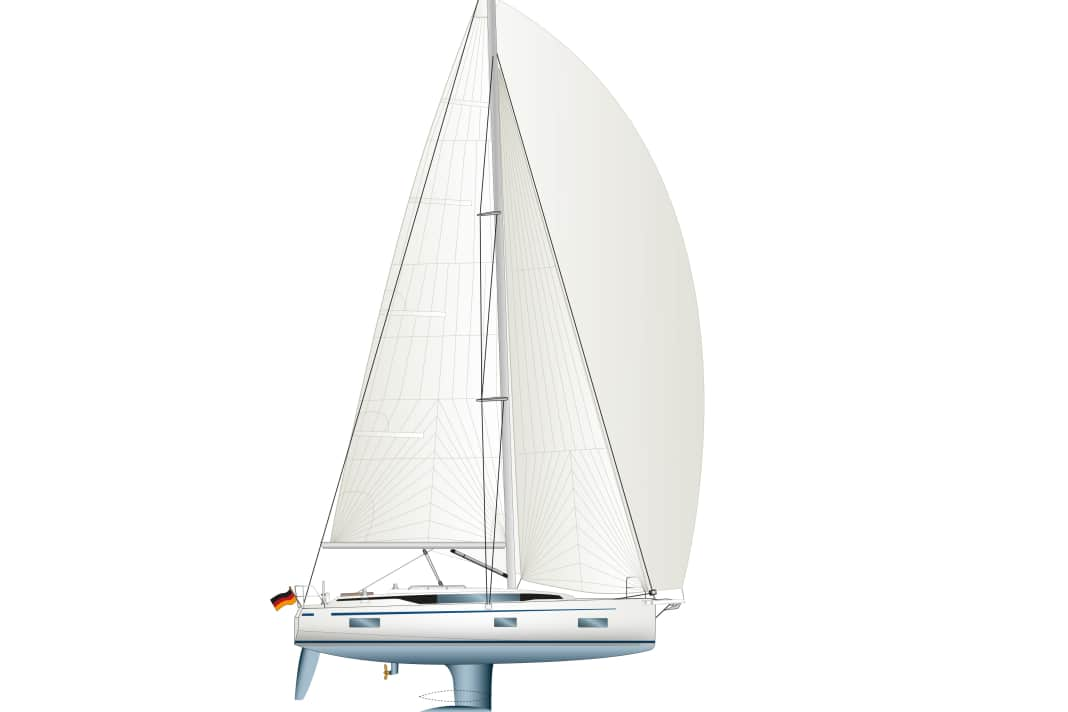



The Bavaria has sailing qualities, but in the version with a furling mast and short keel, it remains inferior in comparison.
Design and concept
Plenty of space for helmsman
Sail load in the forecastle
High weight
Sailing performance and trim
Solid performance potential
Efficient mainsail trim
Not very suitable for one-handed use
YACHT review of the Beneteau Oceanis 37.1
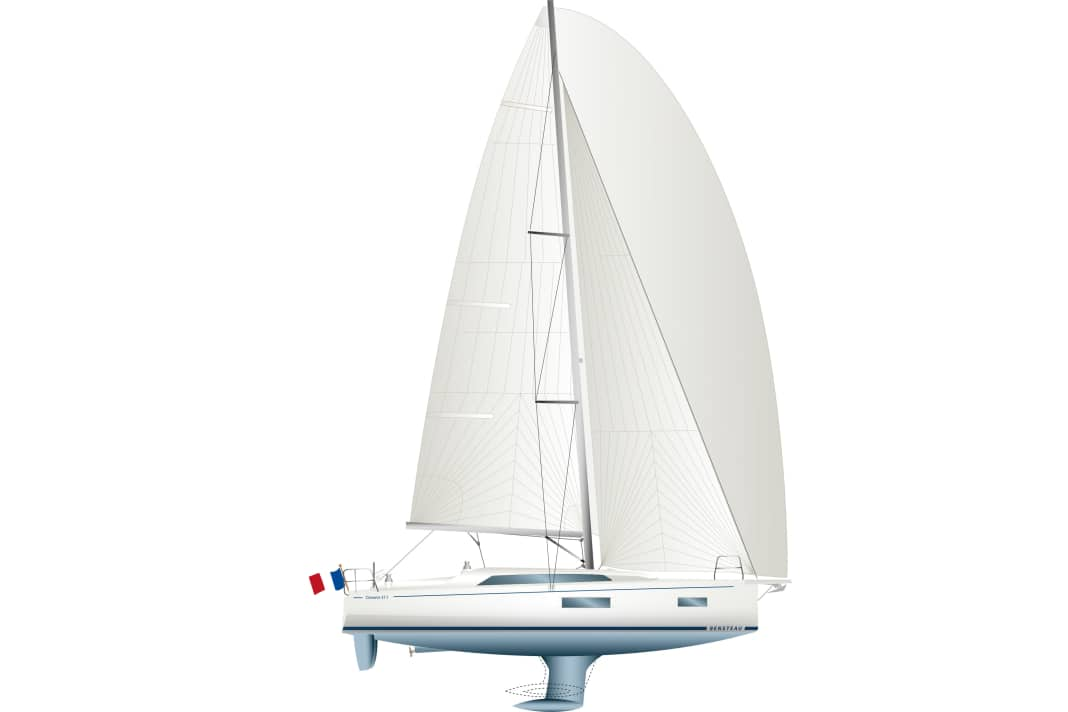



The Frenchwoman shows the greatest performance potential in the group test, but is also equipped with a sporty upgrade.
Design and concept
Lightweight construction
Storage compartment for life raft
Large bathing platform
Sailing performance and trim
Lively sailing characteristics
Good height on the wind
Little steering feel on the wheel
YACHT rating of the Hanse 360
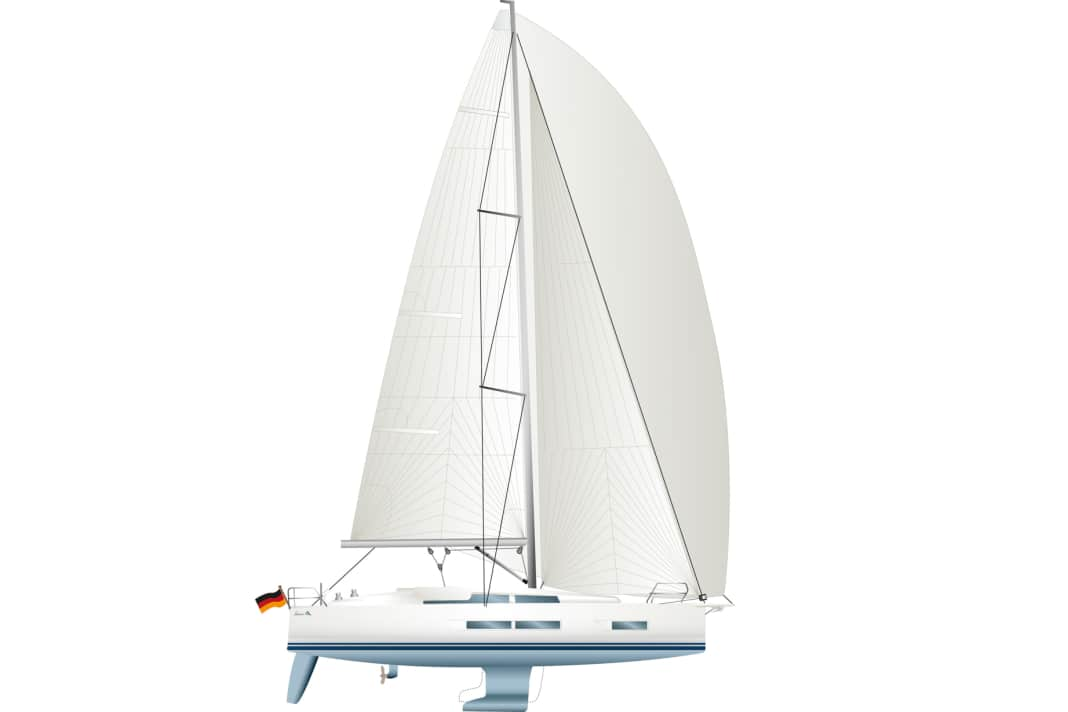



With its solid, good-natured sailing characteristics, the Hanse is convincing in comparison. However, the boat also wants to be challenged in sporting terms.
Design and concept
Visually appealing lines
Plenty of storage space on deck
Relatively short nozzles
Sailing performance and trim
Sensitive steering
High one-handed suitability
Only two winches aft
YACHT review of the Jeanneau Sun Odyssey 380
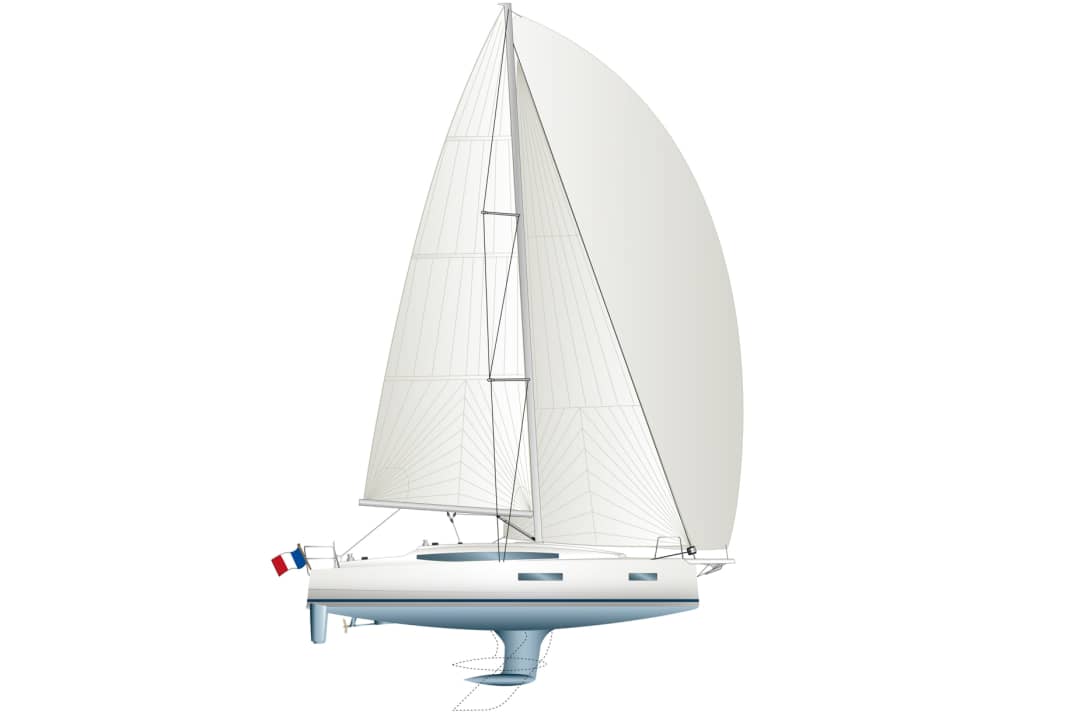



The Sun Odyssey 380 clearly stands out with its concept. The innovative walkaround cockpit in particular offers advantages in comparison.
Design and concept
Walkaround cockpit
Swivelling keel as an option
Little space for helmsman
Sailing performance and trim
Efficient handling
Genoa already standard
No backstay possible
Technical data and prices at a glance
ADVERTISEMENT

Insure your Bavaria C 38 from 1202.56 euros per year or 100.21 euros per month* - third party liability and comprehensive cover.
* Yachting24 offer valid for a sum insured of EUR 218,400 (with current value cover),
Hanse 360 insurance from 1210.62 euros per year or 100.88 euros per month* - liability and comprehensive cover.
* Yachting24 offer valid for a sum insured of EUR 221,300 (with current value cover),
Jeanneau Sun Odyssey 380 insurance from 1149.81 euros per year or 95.82 euros per month* - liability and hull.
* Yachting24 offer valid for a sum insured of 207,900 euros (with current value cover),
Insure your Beneteau Oceanis 37.1 from 1244.70 euros per year or 103.72 euros per month* - liability and hull.
* Yachting24 offer valid for a sum insured of 223,100 euros (with current value cover)
Many options available: protect your crew with passenger accident insurance. Simply calculate and take out online: yachting24.de
Deductible 1300/1500 euros, liability cover 8 million euros.

